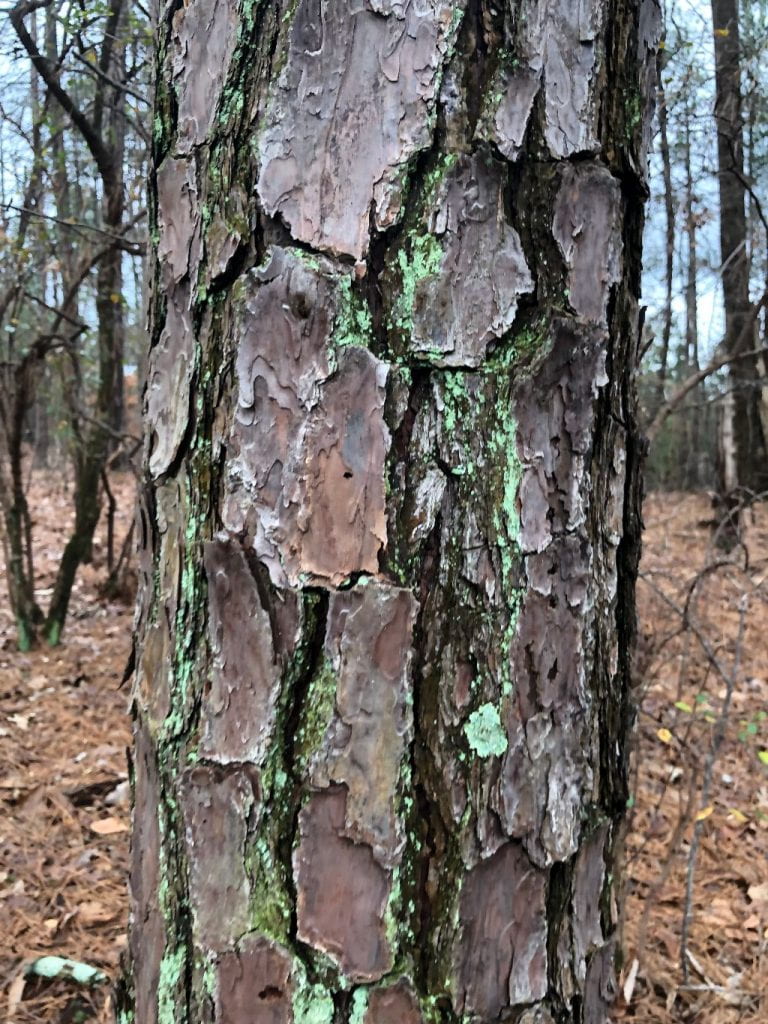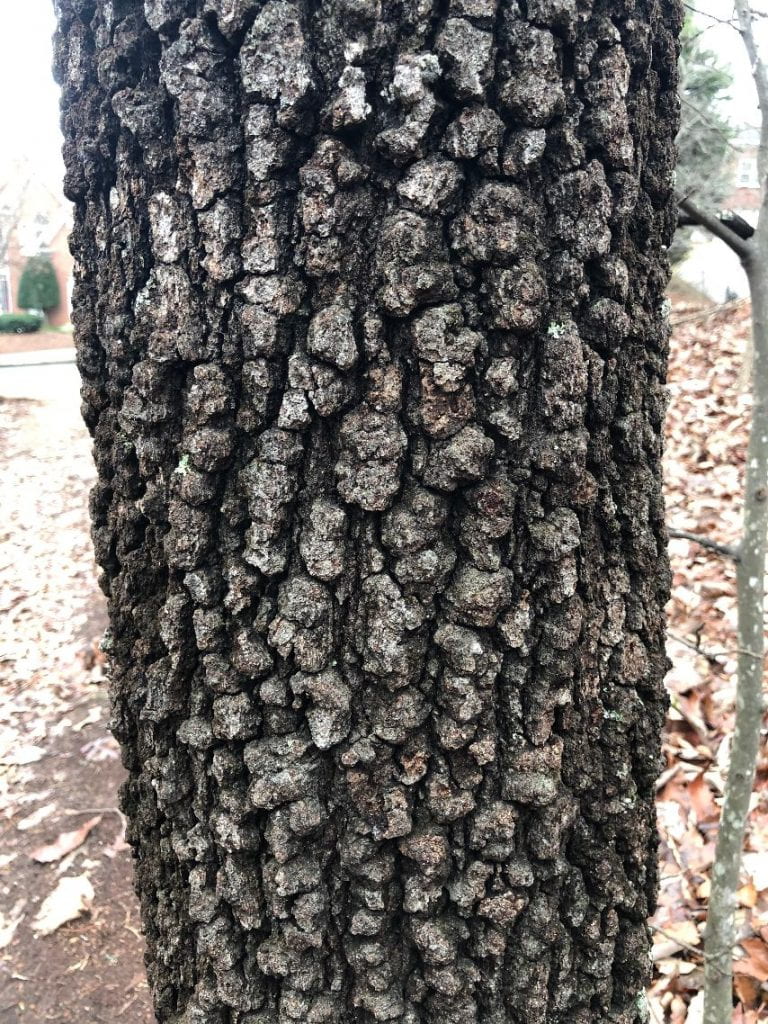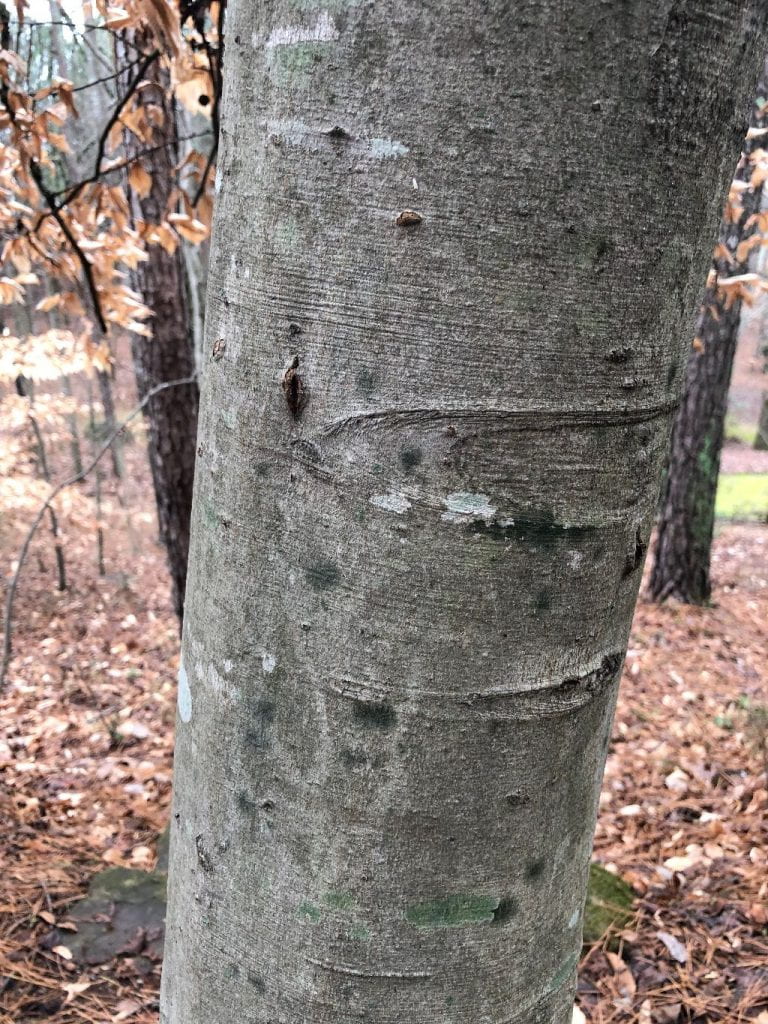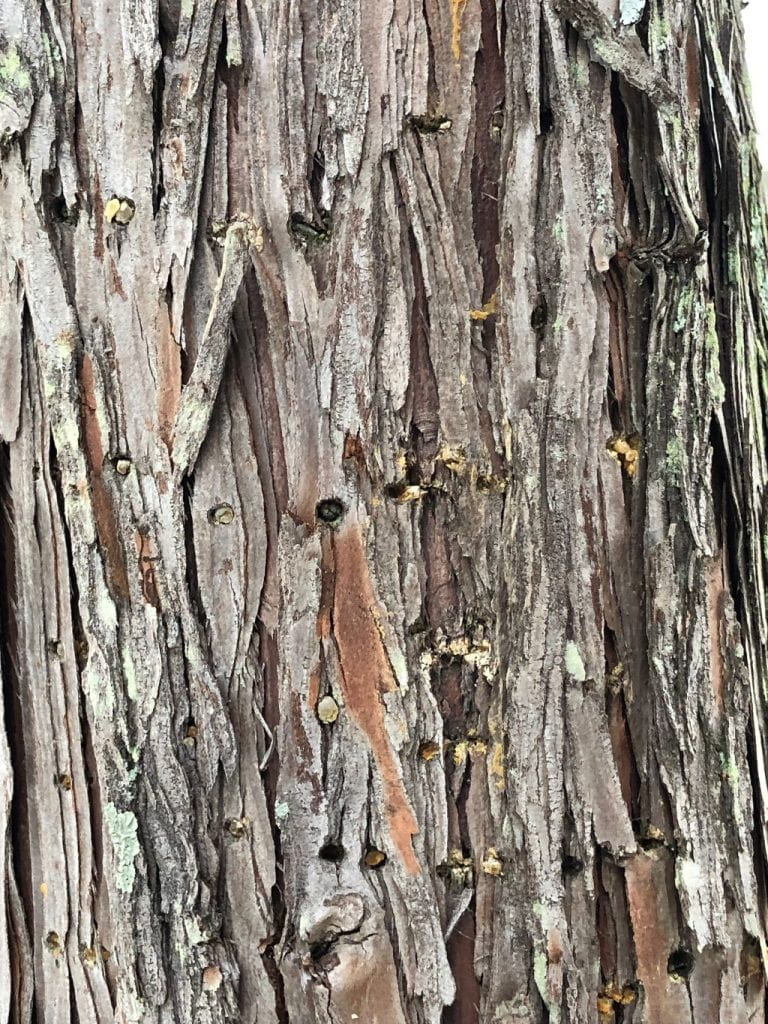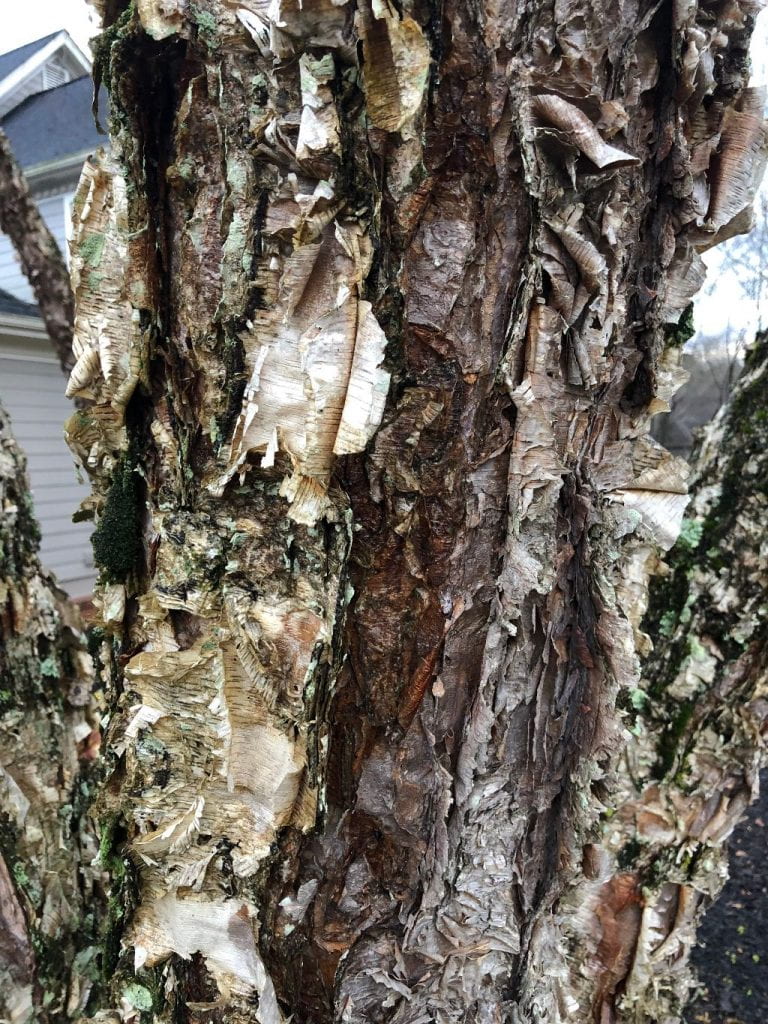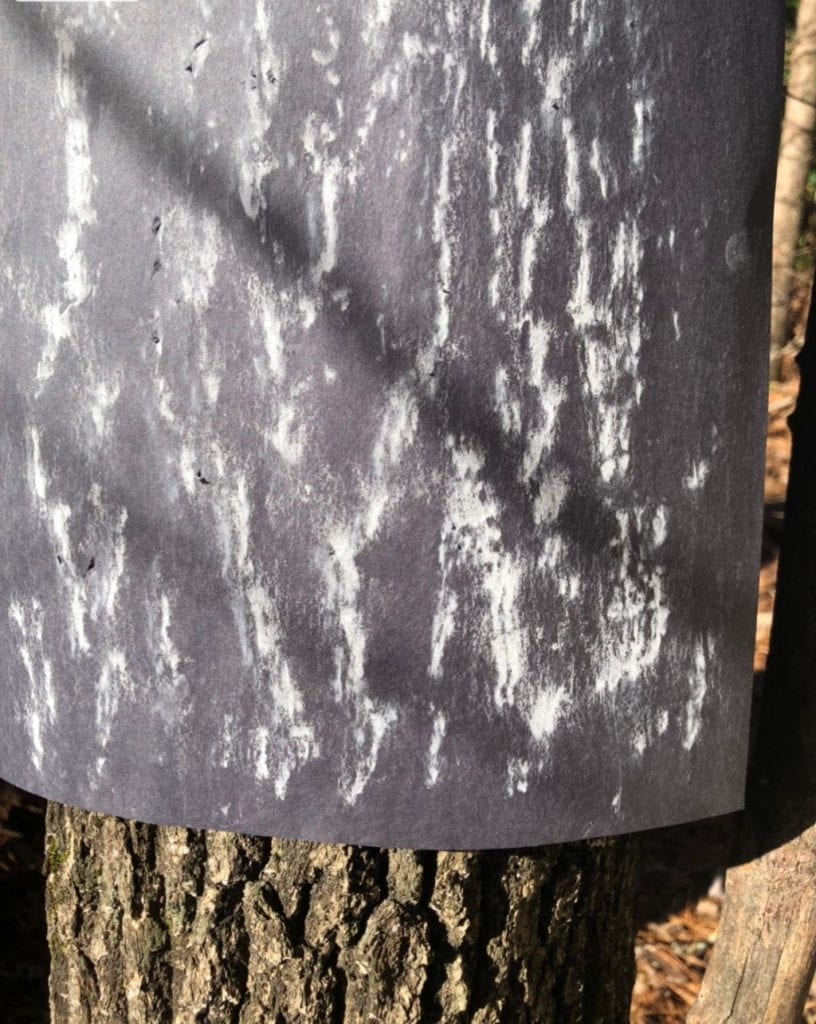Have You Noticed?
I have been sharing suggestions of specific items that families or classes can search for and examine when they hike. In this post, I will focus on bark, the protective outer covering of a tree.
Many of us can distinguish trees by their leaves, seeds, or fruits, but in the winter, many naturalists will use a tree’s bark for identification. Children explore the world via their senses and in this activity, they are identifying texture and learning the accompanying vocabulary. Furthermore, recognizing patterns and developing comparison skills are foundational math concepts.
The following photos are only a sampling of tree bark I saw on my last hike. Aren’t the patterns diverse? Click here to watch a video that will help you identify a tree using its bark.
After touching and describing the bark you find on trees, make a tree bark rubbing. There are several ways to do this, but I prefer black paper and white chalk. Hold the paper very still or tape it on the tree until the rubbing is completed. I found pushing hard in one direction made the best rubbing. Compare the bark patterns on several trees.
